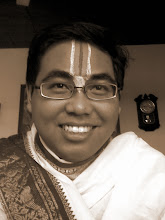On March 25th, the Balinese Hindus performed one of the greatest sacrificial ceremonies in Besakih, the Mother Temple for whole Bali. The ceremony occurs periodically every ten years, on the final Amavashya day of Saka years or can be incidentally if there is any catastrophe and severe natural disaster. This was one kind of very elaborate Bhutabali sacrifice for appeasing the forces of five gross natural elements, the Pancabhuta, the subtler five Tan Matras, and their presiding deities respectively. Hence, it was named Panca Balikrama. After ten Panca Bali were completed, came one Ekadasa Rudra Yajna. A more elaborate and complicated form of Bhutabali, performed on the same spot.
The personified negative imbalance and destructive energy of the primordial Bhutas considered as wrathful manifestation emanating from their presiding Devatas. By the highly complicated process of this ritual, the malignant forces of nature were tamed, controlled, and then merged to their respective Devatas. First they deal with the most powerful, inaccessible, Ugra feature of the Devas, worshipped in gruesome protocol of animal sacrifice and meat offering. Then, gradually converted to more peaceful features and finally worshipped in their Saumya forms, the benevolent ones, ready to give any benediction to the worshippers. The whole ceremony presided by three groups of the so called Vaishnavite, Buddhist, and Shaivite Brahmanic high priests and priestesses. Each sect, with their magical mantra and ritualistic specialities ordained exclusively to their disciplic successions only, controlled each steps of the grand ritual, deals with each powerful transformation of the malignant natural energies, and kept the successfully attained phase perfect in all respects.
Manikanta Bhakthi Maala V Ramakrishna And Others
21 hours ago












No comments:
Post a Comment